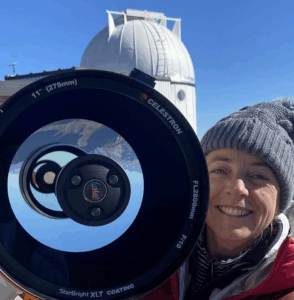
Charline Giroud’s Journey as an ISS Tracker
The International Space Station has been my favorite target since I started astrophotography five years ago. Even though my conditions aren’t ideal—I live in a light-polluted area surrounded by trees,
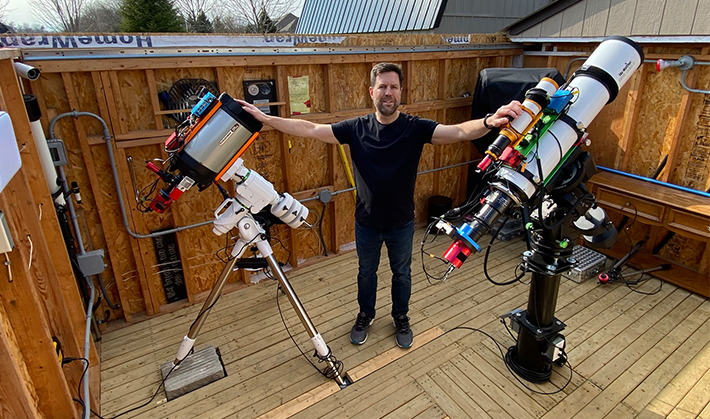
Hello David, thanks for accepting our interview invitation. Congratulations on winning the ASIWEEK competition in week #22/2023!
Hello. My name is David Jenkins and I live in Canada along the 43rd parallel. At night, I am an enthusiastic astrophotographer and during the day, a Chief Financial Officer, with a background in Mechanical engineering. I am married to my wonderful wife, Ria, and we have three amazing adult children.

I am honored to have won a new ASI294MC Pro camera from ZWO as the 2nd place prize in ZWO’s TOP 12 ASIWEEK images of the year contest. My winning photo was featured for the month of February 2023 in ZWO’s annual calendar. I installed this new camera on my Celestron Edge HD8 so that I can have two scopes capturing the same galaxy each night. Currently, I am using the Edge HD8 and ASI294MC Pro to capture RGB and the Esprit 150ED and ASI2600MM Pro to capture Luminance and Hydrogen Alpha.

This is a fascinating galaxy! Powerful jets of red hydrogen gas are seen emanating from the bright core. These intense star-forming regions are caused by tidal forces originating from the gravitational interaction with neighboring galaxy M81. It is estimated that stars are being born 10 times faster than within our home galaxy! 20 hours of integration time, more than half of it from hydrogen alpha, was achieved to produce this final image with the Esprit 150ED, ASIAIR, and two cameras: the ASI2600MC Pro for RGB and the ASI2600MM Pro for Luminance and Hydrogen Alpha. Fortunately, this object is high in the sky from my corner of the world.

Like many astrophotographers, my post-processing workflow is continually evolving. I have spent many hours on cloudy evenings learning how to improve my skills. Adam Block Studios has been a tremendous help, as have some YouTube channels. I perform almost all of my post-processing in PixInsight (including the preprocessing using WBPP). Often, I do some finishing touches in Photoshop. My workflow for broadband and narrowband is different. Here was my workflow for the winning image of M82:
Separate channels from CFA into RGB
BE on each channel (H, L, R, G, B)
Linear Fit each channel to the Red
Recombine into (HR)GB using PixelMath
Spectrophotometric Color Calibration
BlurXTerminator on (HR)GB and separately on L
Stretch both (HR)GB and L images
NoiseXTerminator on (HR)GB and L (be gentle, say 0.6)
StarXTerminator on (HR)GB and L
Curves on L to make the background a little darker
Multiscale Linear Transform on starless L (Use a Mask!) to gently sharpen
Add L back in using LRGB Combination
Increase saturation. Apply gentle curves boost.
Photoshop: If adjusting color, use a Red mask to protect the Ha signal.
Back in PixInsight: Check background brightness and adjust as necessary.
SCNR to eliminate any green cast
NoiseXTerminator (one final time – be gentle)
Stretch RGB stars and add RGB stars back in

I’ve never packed up my gear to travel to a darker sky for imaging. Living in a Bortle 5/6 zone, I dream of imaging under a darker sky. Since I have a SkyShed observatory in my backyard, I find it convenient to keep this hobby close to home. One dark, clear night just after I exited my SkyShed and closed and locked the door, I spotted something moving in front of me. It was a small animal with dark coloring and a distinctive white stripe along its back: a skunk! Standing there alone in the dark, I realized that I had startled this interloper. The skunk stopped and stared at me. I just froze and stared back. When a skunk feels threatened, it will turn its back to you and raise its tail so that it can spray you. I stood still and waited, hoping that this would not happen. After a long pause of staring at each other, the skunk turned, kept its tail down, and walked away. Once the skunk was out of site, I quickly made my way to the back door of our house.

I was most excited when NASA published one of my photos as the Astronomy Picture of the Day (APOD) on August 27, 2022. This was such an honor!
https://apod.nasa.gov/apod/ap220827.html

I spent many years visually looking through my Meade RCX-400 telescope, but I hesitated to enter the world of astrophotography in any serious way, due to the steep learning curve and time commitment. Instead, I was content with using a webcam for some Deep Sky Objects (DSO’s) and a CCD camera for planetary imaging. With the advent of CMOS cameras, I decided to invest more time and money in astrophotography equipment. Now that my kids have grown up and left home, I have more time to spend on this hobby. My wife loves to cross stitch and I love astrophotography. We spend many evenings working on our pursuits and showing each other our latest projects.

The ASIAIR has had the most profound impact on me. I had started off using a PC to control my astro gear (see the image in Question 9 below), but I found this setup vulnerable to bugs and/or driver issues. Trying to get separate software programs working together caused some frustration. The first time I used the ASIAIR, I was so impressed! Everything was intuitive and easy to use. Even with a backyard observatory and multiple telescopes, I still rely on the ASIAIR (I own three of them). I appreciate that, as time goes on, more and more features are being added. The ASIAIR is wonderful, especially on my iPad!

When ZWO introduced dedicated, cooled CMOS astronomy cameras, it was a turning point for me. Compared to older webcams, CCD, and DSLR cameras, the CMOS quality is outstanding! Below is an image I captured of M51 in 2009 (notice the laptop!) compared to my latest image with my new two-telescope approach using the ASIAIR (see picture above in Question #1 for the current setup).


A ZWO field rotator that can be controlled by the ASIAIR and integrated into the Plan mode would be wonderful!
A ZWO mount with fully automated and precise polar alignment (using servomotors instead of manual adjustment knobs). Perhaps, the next evolution of the AM5?
Some advanced features in the ASIAIR for backyard and remote observatories, such as:
§ Integrated dome control
§ ZWO cloud sensor, that can provide a signal to open and close my SkyShed roof or an observatory dome

I want to keep using my two telescope techniques (Celestron Edge HD8 with ASI294MC Pro and SkyWatcher Esprit 150ED with ASI 2600MM Pro). I can now double the number of hours captured each night on a single target! I captured M51 (shown in Question 9 above) with this technique, as well as M81 (shown below).


The International Space Station has been my favorite target since I started astrophotography five years ago. Even though my conditions aren’t ideal—I live in a light-polluted area surrounded by trees,
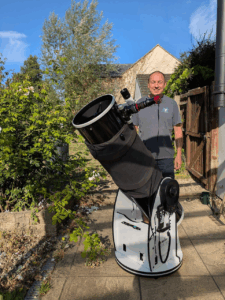
Beginnings in Astrophotography Konstantinos Beis has always been fascinated by the night sky. After moving to a rural area in 2017, where the Milky Way was clearly visible, his passion
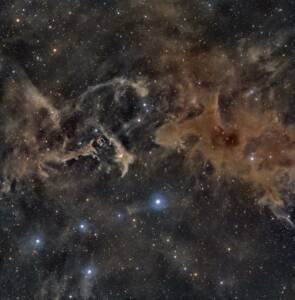
Roy Simanovich, an avid astrophotographer from a heavily light-polluted area (Bortle 9), recently embarked on a solo journey to capture some of the dark nebulae. Let’s follow Roy on that
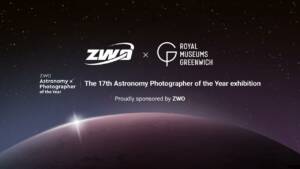
Exclusive Title Sponsorship of the World’s Premier Astronomy Photography Competition August 2025 — ZWO, a pioneer in astronomical imaging from China, is proud to announce its role as the exclusive
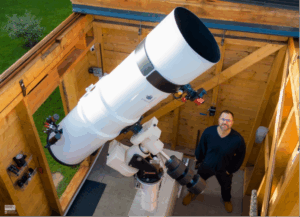
Hello Lóránd, thanks for accepting our interview invitation. Congratulations on winning the ASIWEEK competition in week #20/2025! This is also the third time you’ve been an ASIWEEK winner. Q1:Can you